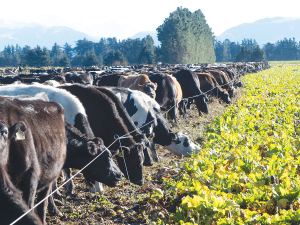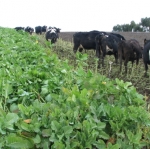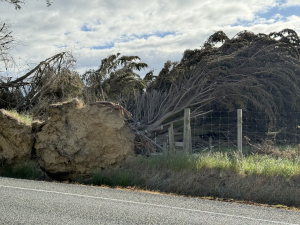A continual process of fine-tuning the management of their winter forage crops to protect their soil and water resources is paying dividends, with less mud, reduced run-off and content livestock.
Young and his family farm a 970ha rolling to steep sheep, beef and dairy support property near Gore.
Winter forage crops, namely fodder beet and swedes, are an important part of their farm system; both as part of their pasture renewal programme and to grow a bulk of quality feed for sheep and cattle over the depths of winter.
Young says run-out pasture is the first consideration when selecting paddocks for winter crops. Most of the crops are sown into ex-grass paddocks and very few paddocks are double-cropped. If they are, the second-year crop will only be grazed by sheep to protect soil structure.
Slope and soil types are the next factors to be taken into account. Young says slope restrictions will rule out a small percentage of their land, but most of their country is suitable if soil structure allows.
The majority of soils on the farm are rocky and free-draining, but they do have pockets of clay which can get wetter over winter. He will avoid cropping the clay soils, but if they do plant crops into them, they will only be grazed by sheep or young cattle.
After soils, Young looks at factors such as creeks, gullies, critical source areas and shelter and these, coupled with soil type, will determine how the paddock will be cultivated, how it will be grazed and by what class of livestock.
This includes planning buffer zones or set-backs and grass strips - the latter are particularly valuable when transitioning cattle onto fodder beet crops.
Young says while fencing off gullies and critical source areas has created some extra work. However, he believes this has been worthwhile and has significantly reduced the amount of mud in the paddocks. The creeks are also cleaner and clearer over winter.
One of the big changes they have adopted this year is a Winter Grazing Plan. While they put one together at the start of winter, Young says they will do that plan in September, before they begin cultivating.
While he found writing a plan to be a really useful process, he believes they will get even greater value by putting it together in spring.











